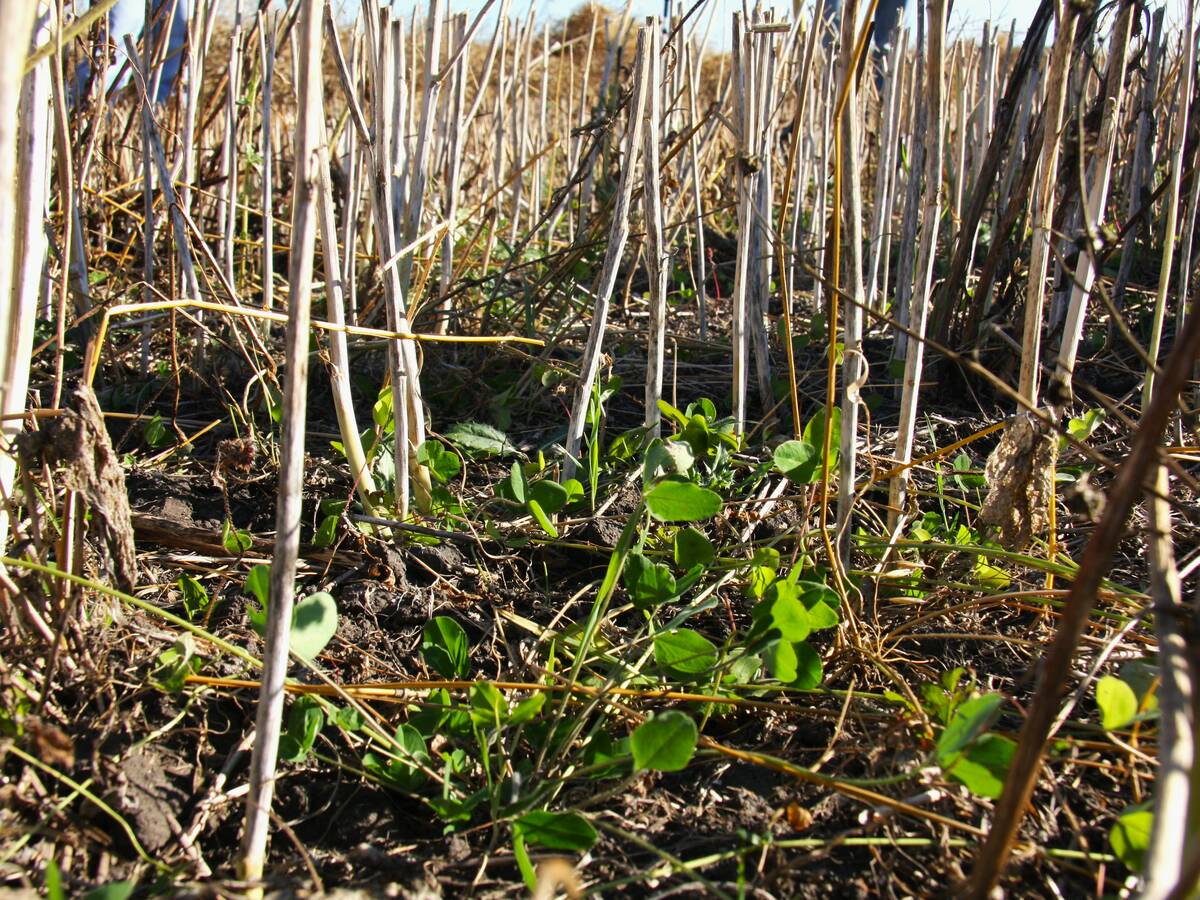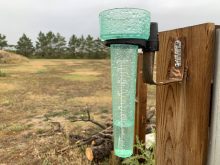The species of weeds being targeted should be considered when determining the optimal timing for a fall application
In many parts of the western Prairies, harvest 2022 is either complete or nearing completion.
That means growers’ attention is turning to fall work, including post-harvest weed control.
Clark Brenzil, provincial weed control specialist with Saskatchewan Agriculture, said a reasonably early harvest in many parts of Saskatchewan, combined with favourable post-harvest growing conditions, is providing good opportunities for late season weed control.
Although some perennial weeds, most notably Canada thistle, are often targeted with a pre-harvest glyphosate application, concerns over maximum residue limits (MRLs) may have convinced some growers to forego pre-harvest glyphosate applications in favour of post-harvest control.
Read Also

Saskatchewan project sees intercrop, cover crop benefit
An Indigenous-led Living Lab has been researching regenerative techniques is encouraging producers to consider incorporating intercrops and cover crops with their rotations.
“Pre-harvest can have some challenges with respect to MRLs and export markets, so we really have to be cognizant of where our crop is going to be sold, regarding what kind of decision we make about using things pre-harvest, like glyphosate,” Brenzil said.
For producers who are considering a post-harvest glyphosate application, timing is a key consideration.
Typically, the optimal timing for fall control of perennial weeds is from mid-August onward, up until the point where frost has caused significant damage to the leafy material of target weeds.
“Generally, any time after about mid-August is when… (perennials like Canada thistle) won’t regrow as a flowering stem but will stay as a rosette,” Brenzil explained.
“When they are in that rosette stage, those weeds are focusing on producing new root growth to go into the winter and to be able to continue growing the following spring.”
Brenzil offered a few tips for growers considering a post-harvest application of glyphosate to control Canada thistle and other perennials.
The species of target weeds should be considered when determining the optimal timing for a fall application.
Some perennial weed species such as dandelions may be better candidates for post-harvest because most of their leaf surface is closer to the ground and less likely to be cut off during harvest.
But for a species such as Canada thistle, pre-harvest applications can typically be expected to produce better results.
Thistles that are cut by the swather or combine header should ideally have four to six weeks of good growing conditions after being cut before post-harvest glyphosate is applied.
This will allow the target weeds to regrow leaves that are essential for chemical uptake.
Post-harvest application rates on perennial thistles should also be adjusted to compensate for reduced leaf area, Brenzil said.
In a pre-harvest glyphosate application, for example, an application rate of 360 grams of active ingredient per acre is the upper limit in harvestable grain crops.
Rate adjustments should be made for post-harvest applications.
“For post-harvest, a quite common misconception is that you just go in at the same rate (360 grams of active ingredient per acre),” Brenzil said.
He said growers must first allow the thistle four to six weeks to regrow so the plant has enough leaves to act as a target for the glyphosate.
“But even with that time frame in mind, you’ll still only have a fraction of the leaf area that you would have had prior to harvest. So, from that perspective, you have to bump up the rate of glyphosate by about three times, so now you’re at about 1,000 grams of active ingredient per acre.”
In a nutshell, higher application rates will allow the reduced leaf surface to transmit adequate amounts of the active ingredient into the root system.
Consideration should also be given to the potential impact of frost, which can damage leaf tissue and interfere with chemical uptake.
Some growers believe that chemical activity can be positively impacted by a light frost.
For some chemicals, that has been borne out by academic research, particularly when dicamba products are being used. But the impact of a light frost on glyphosate efficacy is of little benefit.
Growers should assess the condition of leafy material on target weeds before making application decisions.
Weeds that show frost damage on more than 40 percent of the leaf area are not good candidates for a glyphosate application.
If the extent of frost damage is unclear after a visual examination, growers can assess the impact of frost by bending plant leaves.
Frost-damaged foliage often lacks pliability or may break easily when bent between the thumb and fingers.
As well, applications should not take place for at least 48 hours after a frost to ensure that leaf tissue is still viable and that the plant is actively growing.
Glyphosate performs best on bright, sunny days, with highs of at least 15 C and lows above 5 C. Under cooler conditions, the glyphosate can get tied up in the plant before translocating to the roots.
Canada thistle plants that are 10 to 12 inches in diameter and may show secondary rosette growth should be an adequate post-harvest target, provided that the leaves show little or no frost damage, such as browning or blackening.
















